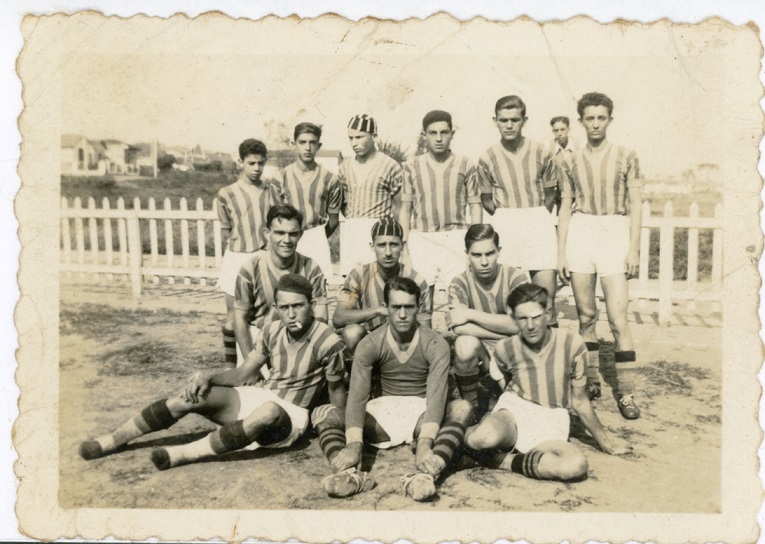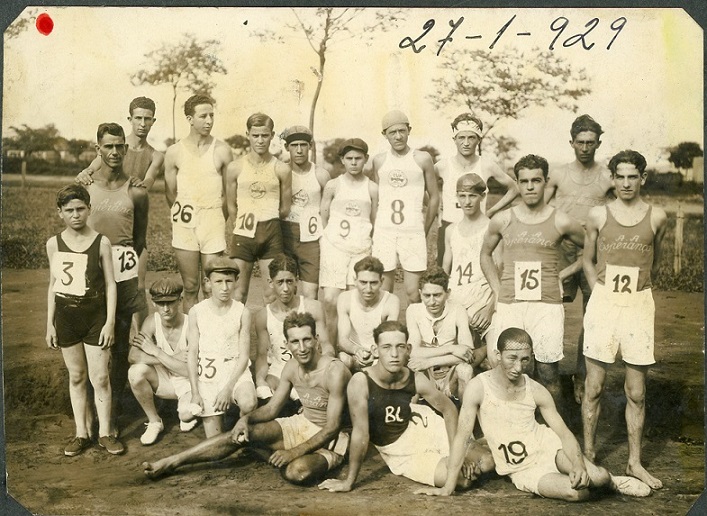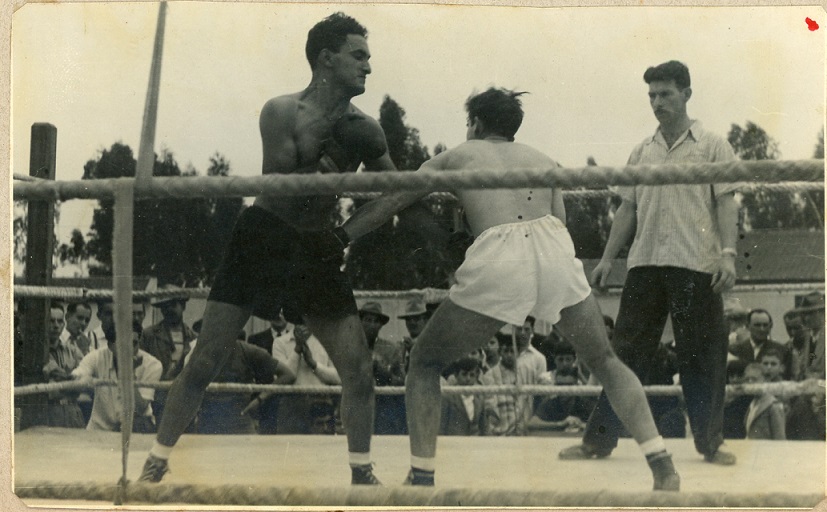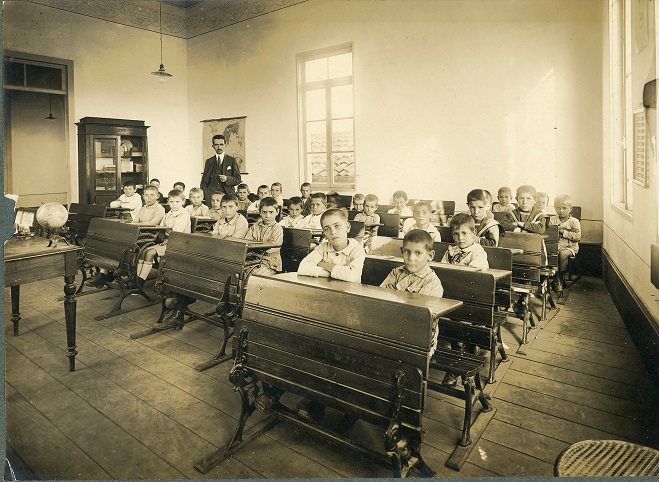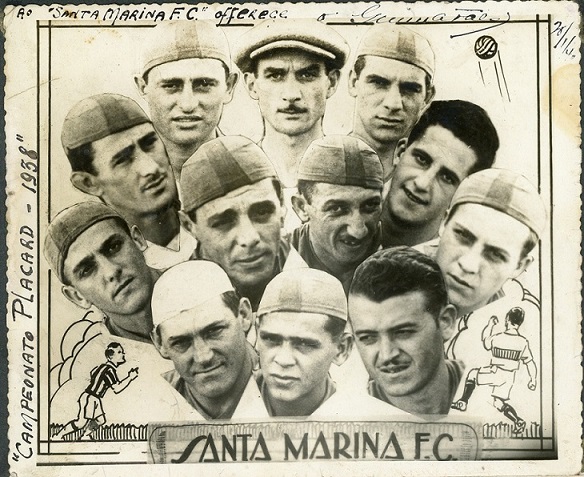The floodplain has the potential to narrate the history of transformation of the city of São Paulo like few objects of sociological analysis. Santa Marina Atlético Clube (S.M.A.C) is a perfect example of this: founded in 1913 by the workers of Vidraria Santa Marina, the club located in the Água Branca neighborhood, on the Tietê River floodplain, received in its staff descendants of Italian immigrants and is, as a rule, an unfolding of the population and industrial growth of the city. Last year, the Brazilian Football Reference Center (CRFB) delved into the Santa Marina collection and discovered photographs and stories worth sharing.
Santa Marina Atlético Clube
The history of the team is preceded by that of Companhia Vidraria Santa Maria, installed in the Água Branca neighborhood in 1892. A little over twenty years later, on August 15, 1913, Santa Marina Football Clube was founded by the residents of the company’s working village – and it was only in the 1970s that the club adopted Atlético Clube. According to Francisco Ingegnere, Chiquinho, president of Santa Marina between 2012-2021, the habit of playing football was already common among workers since 1909. The club started with a field on Rua Sabaúna and after four changes, it arrived at Avenida Santa Marina, where it has remained since 1949.
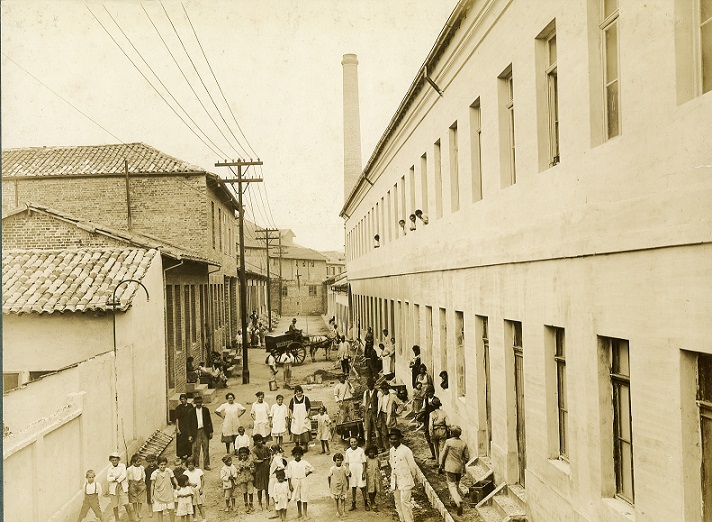
The beginning on the lawns extended to indoor soccer, a modality in which the club was municipal champion and three times state champion, forming the São Paulo Indoor Soccer Team. However, among the achievements, it is for the São Paulo State Cup that Chiquinho has the greatest esteem – the one in 1932 is in the Trophy Room that the club maintains at its headquarters.
But the people from Marin lived not only from football: the club excelled in other sports, such as boxing, basketball, athletics and cycling – with the first sport lasting until the 1960s and the others, until the 1920s-1930s.
The love for S.M.A.C and the (preservation) of local memory
It all started with the patriarch of the Ingegnere family. A company employee, he lived in one of the houses in the workers’ village with his family. The children followed in his footsteps: Chiquinho worked for 35 years at the glassworks, where he left as a lathe worker, and Rose, his sister, worked at the company’s office. And that’s not the only bond the family shares. Currently, Rose takes care of the team’s schedule and financial management. It is not known for sure who arrived first, the fact is that the love for Santa Marina A.C. it also allowed the preservation of the memory of the industrial activity in the neighborhood. In the club, there are photographs of the workers’ village, school, company rooms, party parades promoted by Santa Marina and Nacional, among other occasions.
Relationship with the Football Museum
The Football Museum’s first contact with Santa Marina took place in 2013, through the work of mapping floodplain teams by the Brazilian Football Reference Center (CRFB). In the same year, the club was part of the temporary exhibition Paper Football. In 2021, the CRFB returned to the club’s headquarters to provide a cleaning, packaging and inventorying workshop for its physical collection. In three days, we packed and registered around 294 items – among them, trophies, glass forms from the old factory, paintings and photographs. This work was important because it enhances the preservation of the memory of the neighborhood and the team so that it reaches future generations. This occurred after we were informed of a possible repossession by the multinational Saint-Gobain, which incorporated Vidraria Santa Marina in the 1960s and had a loan agreement with the club. The reinstatement was temporarily suspended by an action filed by the Public Ministry. But the risk of losing the seat still exists.
The S.M.A.C. was included in a Bill of Law authored by councilwoman Erika Hilton (PSOL) at the São Paulo City Council in order to consolidate its recognition as a material cultural heritage of the city, in addition to being inserted in the Special Cultural Preservation Zone (ZEPEC) of the Plano Director that establishes portions of the territory intended for the preservation, enhancement and safeguarding of assets of historical, artistic and architectural value.
The club is still active, housing a football and futsal school for students aged 5 to 16, a Trophy Room and a partnership with local merchants to use the parking lot. The images shared throughout the text were provided by the club to integrate the Football Museum Collection.
Ligia Dona
Researcher – Brazilian Football Reference Center



